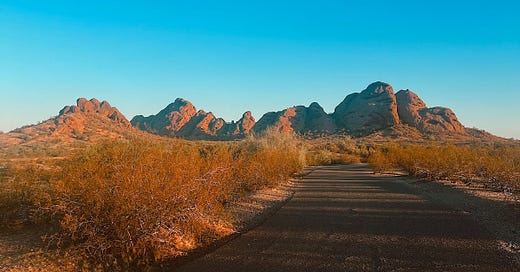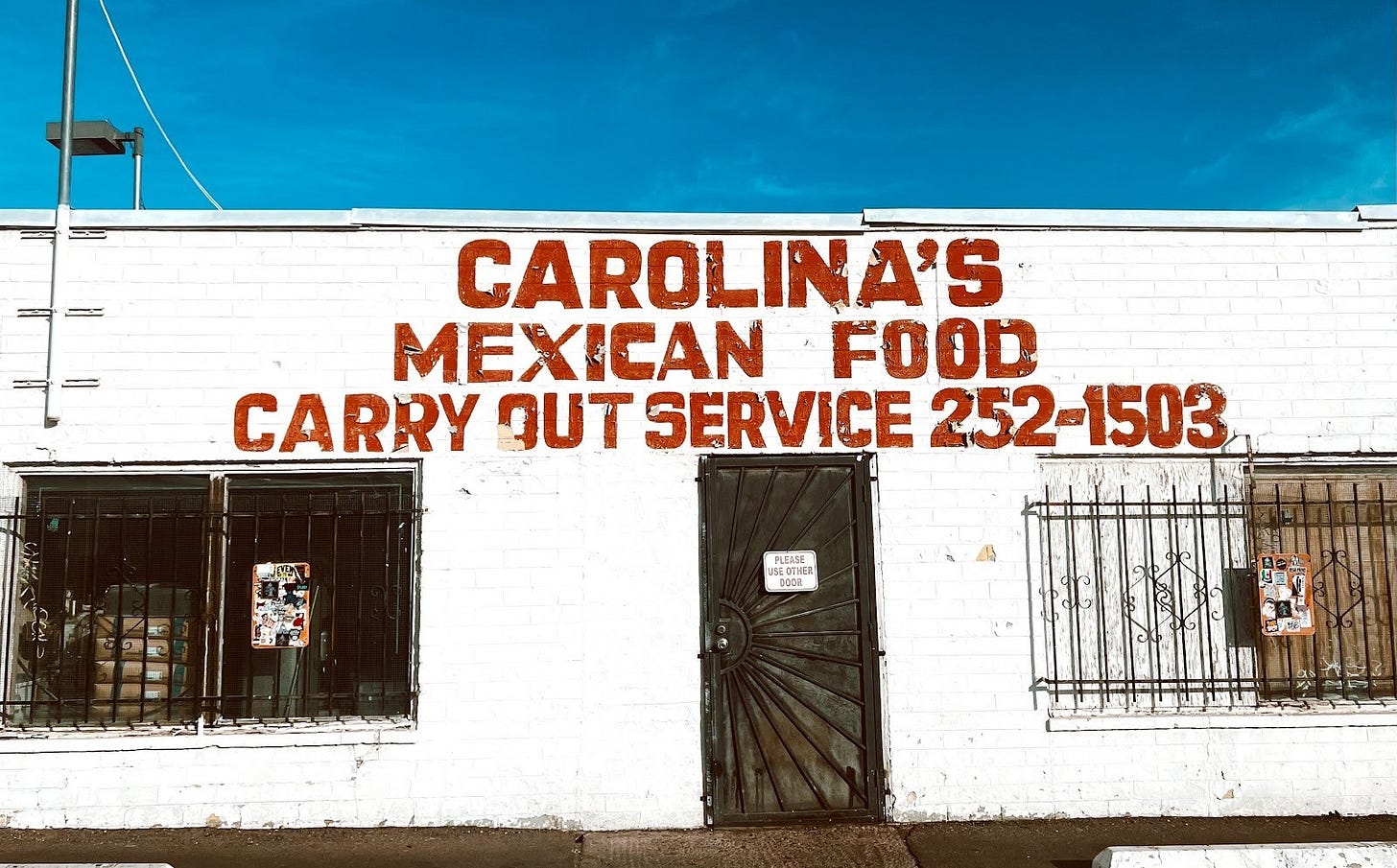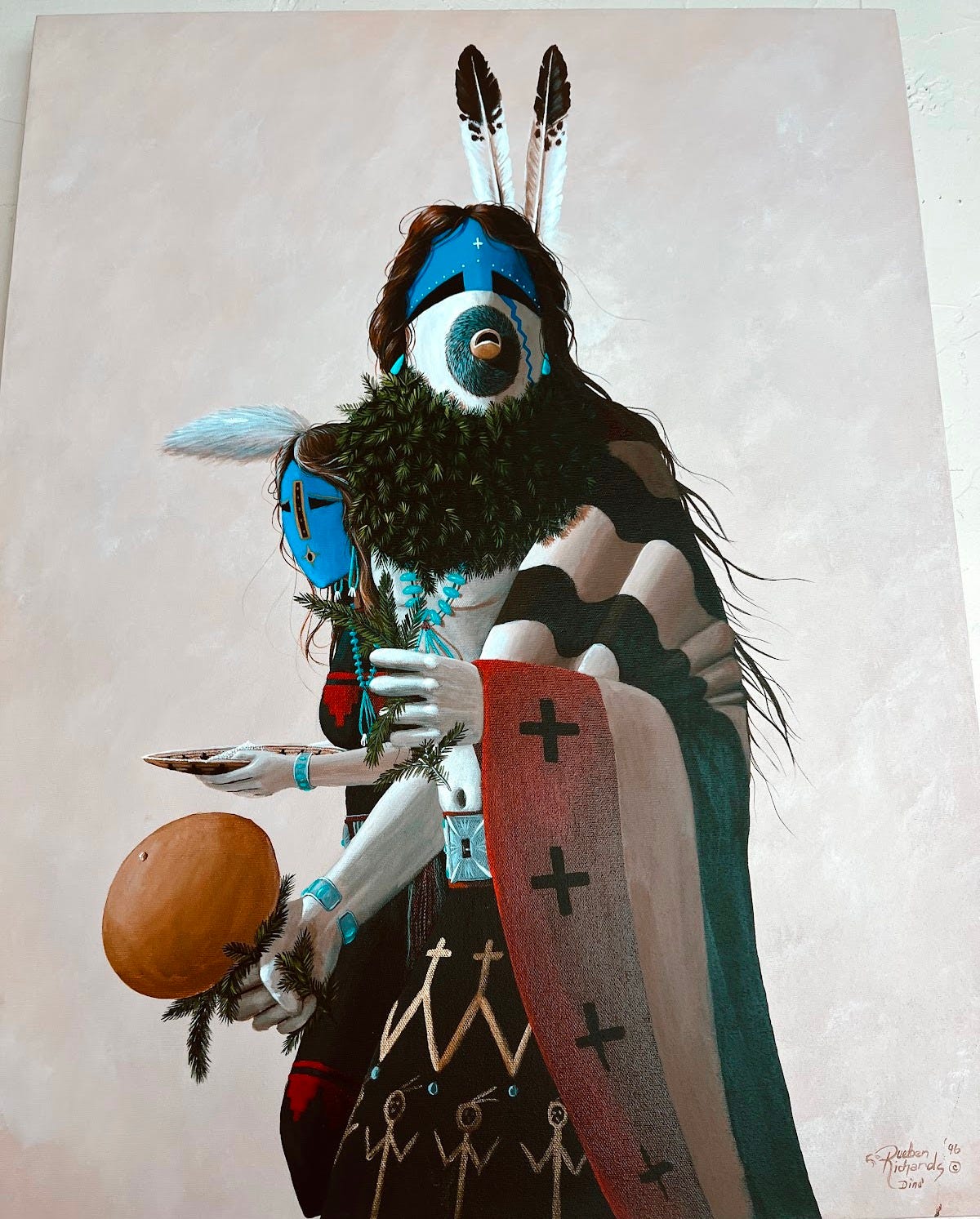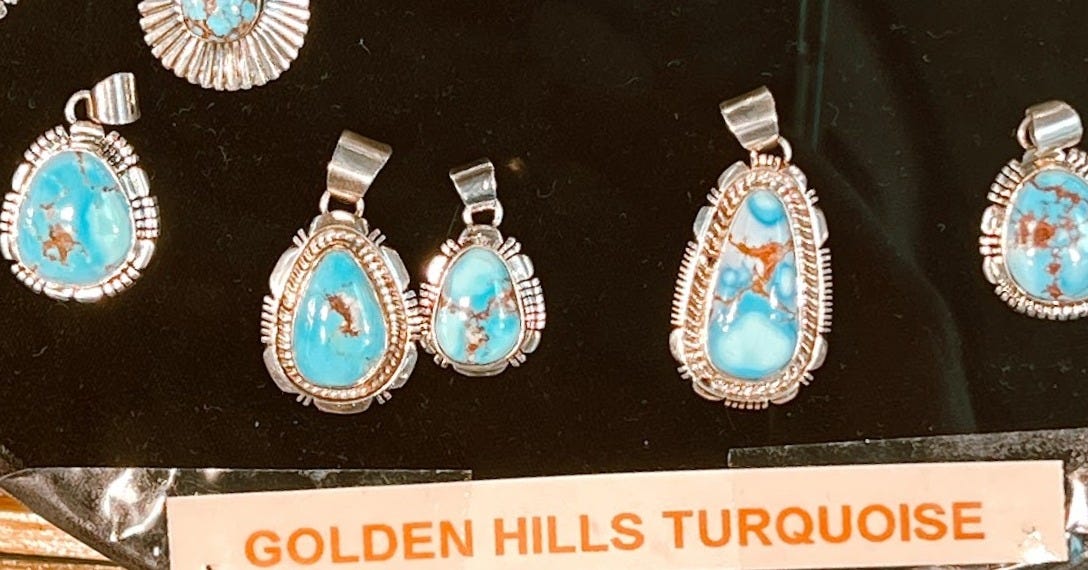Arizona and the Myth of the Changing Woman
On a journey back to the American Southwest, Alyssa Rinelli discovers how a place can transform with us.
The Navajo speak of Estsanatlehi, a goddess who appears as a turquoise woman, known as the 'Changing Woman' because, like the stone she manifests in, she changes with life—altered by environment, light, and the touch of human skin. This myth of change resonated with me as a child in the Midwest, where turquoise gifts from my traveling Aunts were a symbol of the exotic West, promising personal transformation through travel. Now, as I prepare to return to Arizona after years away, I wonder how revisiting this once-foreign land will reflect the changes in my own life.
In a short sense, I was eager to be back where I dreamt about as a young girl. The land of turquoise hills is a symbol of my changed life. Phoenix mirrors this transformation; it's a city where old and new coexist in a perpetual state of evolution—new skyscrapers stand tall beside hole-in-the-wall taco joints that you arrive at in self-driving taxis
This transformation in Phoenix isn't just metaphorical. Post-COVID, the city has seen a massive influx of people, with the population growing by over 150,000. As I flew into the city, I witnessed this change firsthand. The sprawling cityscape is wedged between mountains and ancient rock formations. Builders, unable to move these ancient rocks, sculpted the land around them. The skyline, splattered with cranes and half-built buildings shows a game of catch-up but also represents a city in the midst of a massive change.
I escaped from the modern downtown for breakfast on first day in the city at a little roadside shack. I pulled up to a small, free-standing building with peeling white paint. Above the permanently slightly ajar screen door, painted in fire engine red, was the name Carolina’s. The interior was somehow more unassuming than the outside; the menu board, worn and sunburnt despite being indoors, had prices occasionally covered with duct tape.
There were several people ahead of me, but the line moved quickly. I opted for a breakfast burrito and one of their self-proclaimed famous tortillas, known for their soft, chewy texture. I found a plastic table and chair to sit at while waiting.
The food came out as fast as people came in, a constant flow. The burrito was the size of my face, stuffed with Machaca, egg, and potatoes, accompanied by a variety of spicy hot sauces batched just behind the counter in large metal drums. I took my seat next to the entryway, watching a diverse crowd funnel into this small joint—mostly blue-collar folks coming in early for a bite before work. I guess I was just doing the same.
Arizona, in many ways, is a melting pot and gateway for the American Southwest. The widely unpopulated areas just outside of the city adorned with otherworldly rock formations are an alluring draw to the region. You get a taste of this even in the populated city centers of Phoenix—a mix of Mexican, Native American, and that gritty American pioneering spirit.
In the early glow of the next morning, I made a trek across town to Scottsdale, a sprawling city on the eastern side of Phoenix.
The streets here, lined with buildings reminiscent of a boomtown, made me feel like I'd stepped onto the set of a cowboy movie turned shopping district. The narrow streets were filled with shops, but my aim was not for souvenirs but rather the impressive block of art galleries for which Scottsdale has quietly become known.
I spent my afternoon perusing Native American art and pottery, larger-than-life photography canvas prints, and drippy abstract paintings of bunnies. I moved slowly through each of the spots. I was slowed down not from admiring the art on the walls but rather by each of the gallery curators. I talked with them what felt like an hour at each stop.
Sometimes I missed out on seeing the actual art, distracted by conversation. But I didn’t mind, there was something about the connectedness and warmness from the owners as we talked about life and art that felt innately human. A connection between the art pieces and the sprawling lands on which they sat.
Towards the end of the art district, I found myself in a small jewelry shop, fawning over the turquoise pieces that had been a staple in my life—gifts from far away from my eclectic and well-traveled aunts, and my touchstone for travel.
Now, I found myself in the place where these beautiful stones are mined, imported, and transformed into stunning pieces. I felt drawn into a small shop in the middle of Old Town. From outside, you can't really get a good look at the pieces, but inside, through the glass cases and under fluorescent lights, the various blues and copper veining of the stones shone brightly.
Admiring the turquoise set jewelry, arguably as a different person than the girl who grew up in Wisconsin to the woman who lived on multiple continents, the stones still harbored that sense of wanderlust—a feeling like there is something else out there that will change me if I have the courage to seek it out. It is as if turquoise, that representation of change, was able to ground me despite my personal transformation, representing not only that childlike yearning but a sense of deep gratefulness and contentment with the life I've created as a traveler.
I gravitated towards one case with stones unlike any I had seen or worn before. Their color was sky blue, like the hue on a perfectly clear afternoon in early summer, unlike the more common greenish-toned stones. 'It’s from Kazakhstan, in the Golden Hills,' the shop owner said after noticing my admiration for the stones, adding that they were their most popular.
It made sense; their baby blue color and dark web matrix were alluring, and their color and type were rare. They ship the gems from the Caucasus region before Navajo tribes craft them into pieces. When I asked if the gems were difficult to get, he said, 'I know a guy.' I laughed, and he shared that he was a religious refugee from Iraq, coming from the Catholic minority there. I tried on several pieces before settling on a pair of earrings.
As I drive back for the evening, I wonder why he decided to get into the jewelry trade—I forgot to ask. Maybe for him, the stones represent a faraway place, a connection to his home region, just like they once represented a faraway place for me.
I stop at the far edge of Scottsdale's Art District on my way back to Phoenix to check out a shipping container turned into a hip motor-cafe. The owner, inspired by classic cars, had cultivated a community in Phoenix for car aficionados. The crowd when I walk up includes street-style LA transplants, one wearing a vintage motor jacket adorned with oil and cigarette sponsorship logos. It was that cool, west-coast vibe that bled into the desert sands of Phoenix.
The menu, much like the classic cars that drive up, is classic—no frills to the drinks, just a solid espresso pull with whole milk. There's something about a classic drink made right, where the basics are allowed to shine, that simply exceeds frilly drinks.
I take a seat in view of the moving traffic on the adjacent street, taking a moment to really look at my new pieces. The silver-set sky-toned stone with copper veins glimmered with the sun outside. A turquoise, yet different from any I had known before. I guess the stone really does change with the wearer, the same stone but a different look for the different person I am now.
As I sit in my terminal headed back after a short work jaunt, I wonder what Phoenix will look like the next time I move through. I'm left to wonder. For now, I will wear my turquoise earrings and remember a time when travel seemed inaccessible and the change it took to get here.
Where to eat, play, and stay in Phoenix
Where to eat in Phoenix:
Keep reading with a 7-day free trial
Subscribe to Rinelli Traveler Magazine to keep reading this post and get 7 days of free access to the full post archives.











